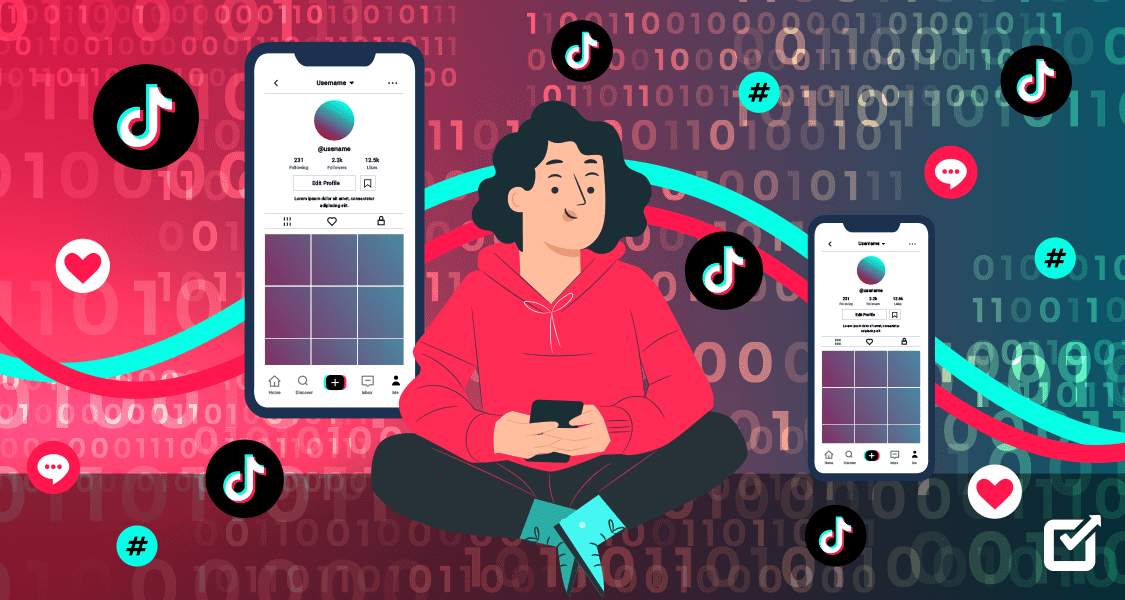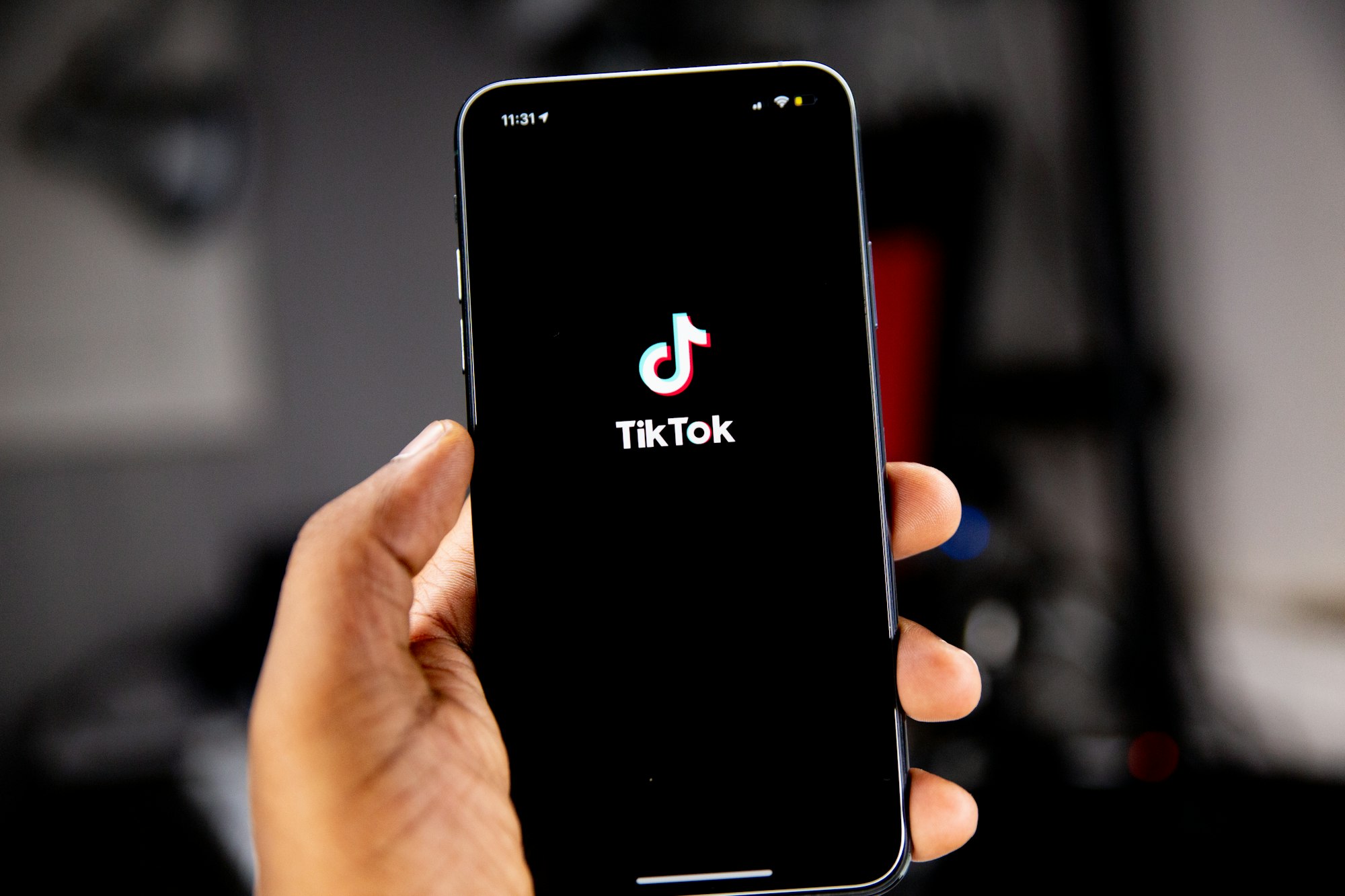The Dark Side of Gamification Addiction: Unraveling the Truth
Games can be great for entertainment and engagement, but what about the potential for addiction? Understand the dark side of gamification and how to overcome it with this guide.

Gamification has become a popular way to engage users in gaming and online activities, but it also has potential for addiction. Learn about the dark side of gamification, from increased levels of anxiety and stress to difficulty regulating emotions and behavior. Plus, find out how to spot warning signs of addiction and tools to help overcome it.
What is gamification?
Gamification incorporates game-like elements and principles into non-gaming environments, such as businesses or educational settings, to increase user engagement, motivation, and overall enjoyment. Some common gamification elements include points, badges, leaderboards, challenges, and rewards.
These elements are often used to create a sense of competition and achievement, encourage desired behaviors or actions, and provide users with feedback on their progress. The ultimate goal of gamification is to create an engaging and enjoyable experience for users, leading to increased satisfaction and loyalty and improved performance in the targeted environment. Moreover, gamification has proven to be a highly effective tool for driving innovation and promoting positive change across various industries.
For instance, gamification has been used in healthcare to motivate patients to stick to treatment plans and adopt healthy lifestyles. In the corporate world, it has been employed to enhance employee productivity, collaboration, and skill development.
In the education sector, gamification has revolutionized traditional learning methods by transforming them into interactive and immersive experiences that cater to diverse learning styles and facilitate the acquisition of knowledge and skills more engagingly and enjoyably.
In conclusion, gamification has become an increasingly popular approach for organizations looking to drive engagement, motivation, and performance. As such, businesses and institutions must recognize the potential of gamification and explore innovative ways to incorporate game-like elements into their processes, ultimately reaping the benefits of increased user satisfaction, loyalty, and overall success.
As we continue to embrace the digital era, it is clear that gamification will play a vital role in shaping the future of user experiences across various industries and domains.
Gamification has both bright and dark sides. While it can be an effective tool for learning and motivation, there are also adverse effects associated with it. These include indifference, loss of performance, undesired behavior, and negative mental and emotional health effects. In the workplace, gamification can also have a dark side when employees feel forced to participate or experience increased stress. Therefore, it is essential to consider both gamification's benefits and potential drawbacks before implementing it in any context.
What is Gamification Addiction?
Gamification addiction, sometimes referred to as video game addiction, refers to a compulsive use of digital or other electronic games that interferes with an individual’s daily life and relationships. This type of addiction has been linked to increased anxiety and stress levels, difficulty regulating emotions and behavior, as well as a decreased sense of belonging and self-esteem.
While there is often an element of reward or challenge associated with playing video games, gamification addiction goes beyond simply playing for the fun of it. Signs of the disorder may include isolating oneself from family and friends in order to play, spending excessive amounts of time playing games, feeling anxious or irritable when unable to play, and arranging daily routines around gaming. Long-term effects can include poor physical health, exhaustion, difficulty sleeping, and weight gain. Treatment options like therapy and support group meetings as well as digital detox programs can be effective in managing gamification addiction.

Negative Impacts
Gamification, the application of game design elements in non-game contexts, has gained popularity in recent years to engage users, enhance motivation, and improve learning outcomes. However, there are potential negative impacts associated with its use. Some of these include:
- Overemphasis on extrinsic motivation: Gamification often relies on rewards such as points, badges, and leaderboards to motivate users, which leads to an overemphasis on extrinsic motivation, potentially undermining intrinsic motivation, which is considered more sustainable and effective in the long run.
- Superficial engagement: Gamification can result in users engaging with content or activities only to earn rewards or achieve a higher ranking. This leads to superficial engagement and focuses on short-term goals rather than deep learning and long-term understanding.
- Addiction and compulsive behavior: The elements of gamification that make it engaging and motivating can also lead to addiction and compulsive behavior. Users may prioritize the game aspects over other essential activities, affecting work, relationships, and other parts of their lives.
- Negative competition: While competition can be a motivating factor for some users, it can also foster a negative environment in which users may feel stressed, demoralized, or left out if they're not performing as well as their peers.
- Inequity: Gamification can exacerbate existing disparities, as those with more time, resources, or prior experience might have an advantage over others. This can lead to feelings of unfairness and discourage participation among some users.
- Privacy concerns: Gamification often involves collecting user behavior and performance data to provide personalized experiences, leaderboards, and feedback. This can raise privacy concerns and the potential for misuse of personal information.
- Inappropriate implementation: Poorly designed or inadequately implemented gamification can lead to frustration, confusion, or a lack of user engagement. It's essential to consider the context and needs of the target audience when designing gamification systems.
- Overreliance on gamification: The widespread adoption of gamification might lead to an overreliance on these techniques, which can overshadow other effective teaching methods, learning, or engaging users.
Photo by Shingi Rice / Unsplash
Considering these potential negative impacts when designing and implementing gamification initiatives is essential. By addressing these concerns and balancing gamification elements with other methods, it is possible to harness the benefits of gamification while minimizing its drawbacks.
How Can You Spot Signs Of Addictive Behaviour?
It can be difficult to spot signs of addictive behaviour, since it can manifest in different ways for different people. Some signs that someone might have a problem with gamification addiction include feeling compelled to play, playing games for longer than intended and neglecting other important activities and responsibilities. Other warning signs may include irritability when unable to access the game, lying about how much is being played and difficulty staying away from the game even when asked.
One of the more obvious signs that someone is addicted to games is a lack of balance in their life. If someone finds that they are playing games inordinate amounts, or if their gaming or other online activities interfere with normal life and activities, they may need help. Another key sign is physical symptoms like headaches, stomachaches or insomnia caused by frequent long periods playing games. These can all be warning signals that an individual may need assistance in dealing with an addiction to gamification.
In response to these concerns, the Trump administration issued executive orders in August 2020, aiming to ban TikTok and force the sale of its U.S. operations to an American company. As a result, several companies, including Microsoft, Oracle, and Walmart, were in talks to acquire TikTok's U.S. operations. However, the ban was never fully enforced, as it faced multiple legal challenges from TikTok and other parties. In addition, U.S. courts issued preliminary injunctions to prevent the ban, citing concerns about freedom of speech and the lack of sufficient evidence to support the national security claims.
Questionable Apps
It is important to note that the term "exploited" might have negative connotations, implying that these apps have intentionally manipulated or taken advantage of users. While some apps may indeed have questionable practices, it is crucial to recognize that developers may not always have malicious intentions. That said, here are a few examples of apps that have been criticized for their potentially exploitative nature or for using addictive design elements:
- Mobile games with loot boxes: Many mobile games, such as Clash Royale, Candy Crush, and FIFA Mobile, have been criticized for using loot boxes or in-app purchases that encourage players to spend money to progress faster or obtain rare items. These systems can be particularly exploitative for vulnerable users, such as children or those prone to addiction.
- Social media platforms: Apps like TikTok, Facebook, Instagram, and Snapchat have been accused of using gamification elements, such as likes, comments, and streaks, of keeping users engaged and spending more time on their platforms. These features can exploit users' desires for social validation and create compulsive behavior.
- Fitness apps: Some fitness apps, like Strava, have been criticized for promoting an unhealthy focus on competition and quantifying every aspect of physical activity. While these apps can motivate users to exercise, they can also lead to excessive competition, stress, and even physical harm in extreme cases.
- Duolingo: The popular language-learning app Duolingo has been criticized for its use of gamification elements, such as daily streaks, XP points, and leaderboards, which can lead to users focusing more on maintaining their streaks than actual language learning.
- Mobile gambling apps: Many mobile gambling apps, including those offering casino games, sports betting, and poker, have been criticized for exploiting addictive tendencies and encouraging users to spend more money than they can afford.
It is essential to emphasize that these apps are not inherently wrong; many users find them useful, engaging, and enjoyable. The issue lies in the potential for these apps to exploit users' vulnerabilities, leading to addiction or other negative consequences. Developers should consider the ethical implications of their design choices and be mindful of the potential impact on users.

Exploring Tiktok app
TikTok, a short-form video-sharing app, has become immensely popular among users worldwide. While not explicitly a gamified platform, TikTok incorporates several design elements that tap into behavioral patterns to keep users engaged, some of which could be seen as exploiting users' vulnerabilities. Here are a few ways TikTok could be perceived as exploiting the situation:
- Infinite scrolling and addictive content: TikTok's "For You" page features an endless stream of videos, making it easy for users to keep scrolling and consuming content without realizing how much time they spend on the app. The short video format and the algorithm's ability to curate content tailored to users' interests further contribute to the addictive nature of the platform.
- Social validation and feedback loops: TikTok uses likes, comments, shares, and follower counts as a form of social validation. Users may become preoccupied with these metrics, constantly seeking validation and approval from others. This can create a feedback loop where users are incentivized to post more content to receive more engagement, increasing their time spent on the app.
- Fear of missing out (FOMO): The rapidly changing trends and challenges on TikTok can create a sense of urgency and a fear of missing out among users, who may feel compelled to participate in these trends to stay relevant gain social validation.
- Competition: TikTok's AI algorithm promotes popular videos and creators, creating a competitive environment where users may feel pressured to produce viral content or emulate successful creators to gain recognition and followers.
- Variable rewards: The unpredictable nature of the TikTok algorithm and the potential for any video to go viral can lead to users constantly seeking the "hit" of a viral video, driving them to spend more time creating and consuming content on the platform.
- Exposure to harmful content: While TikTok has made efforts to moderate content on its platform, users may still be exposed to potentially dangerous content, such as misinformation, self-harm, or explicit material.
Users must be aware of the potential negative impacts and use the platform responsibly, setting boundaries and balancing their time on TikTok with other activities.
Photo by Solen Feyissa / Unsplash
In June 2021, President Biden revoked the Trump-era executive orders targeting TikTok and signed a new executive order directing a broader review of foreign-controlled apps that could pose a risk to U.S. national security.
What are the Consequences of Gamification Addiction?
The consequences of gamification addiction can be serious and long-lasting. Not only does it affect physical health, boasting risks for obesity, headaches, carpal tunnel syndrome and sleeping disorders, but it can also have a drastic impact on mental health. Gamification addiction can lead to depression, isolation and an impaired ability to form healthy relationships with others. Additionally, some may develop an “addictive personality” where the need for pleasure or reward overrides all else.
Impacts
The impact of gamification and potentially exploitative app design on kids and adults can manifest in various ways, some unique to each age group while others are common. Here are some ways these app designs may impact children and adults:
- Reduced attention span: The constant stimulation and instant gratification provided by gamified apps can contribute to shorter attention spans, making it difficult for kids and adults to focus on tasks requiring sustained concentration.
- Interference with real-life responsibilities: The addictive nature of some apps may lead to users spending excessive amounts of time on them, interfering with real-life commitments, such as school, work, or relationships.
- Mental health issues: The use of gamified apps, especially those that promote social comparison or competition, can contribute to feelings of anxiety, stress, depression, and low self-esteem among both kids and adults.
- Disruption of sleep: Excessive use of gamified apps or devices late at night can interfere with sleep patterns, leading to sleep deprivation and negatively affecting physical and mental health.
- Physical health issues: Prolonged use of digital devices can contribute to a sedentary lifestyle and may result in health issues such as obesity, poor posture, and eye strain.
Impacts specific to children:
- Impaired social skills: Overuse of gamified apps may lead to children spending less time engaging in face-to-face interactions, which could negatively affect the development of social skills and emotional intelligence.
- Exposure to inappropriate content: Children may be exposed to age-inappropriate content or interact with strangers online, potentially putting them at risk.
- Cognitive development: Excessive use of gamified apps might hinder the growth of essential cognitive skills, such as problem-solving, critical thinking, and creativity, as these apps often prioritize short-term rewards over deeper learning.
Impacts specific to adults:
- Financial consequences: Adults may be more susceptible to in-app purchases or gambling, which can result in financial strain or debt.
- Work-life balance: Adults may struggle to maintain a healthy work-life balance if they become overly reliant on gamified apps during leisure time or cannot disconnect from work-related apps.
It's crucial for both children and adults to use gamified apps responsibly and in moderation. Parents must monitor their children's screen time, set boundaries, and encourage a balance between online and offline activities. Adults should also strive to balance digital and real-life experiences, prioritizing physical and mental well-being.
The Biden administration demands that ByteDance sell its stake in TikTok or face a possible U.S. ban on the app. TikTok has attempted to persuade U.S. officials that they can address security concerns and meet the level of proposed scrutiny but has not yet indicated it will sell. In addition, if there is a ban, there would be no more updates and software enhancements, making it harder to use those apps over time.
Several countries have banned or restricted TikTok due to privacy and security concerns amid ongoing tensions with China. Canada recently banned TikTok on government-issued mobile devices following a similar ban from the European Union, March 2023.
How Can You Limit the Risks of Becoming Addicted to Games?
Limiting game time is one of the most effective ways to reduce the risk of addiction. Most experts recommend no more than two hours per day of gaming, but this should be tailored to each individual as some people may require less or even more play depending on their individual needs and games of choice. Additionally, it’s important to find a balance between online gaming and real-life pursuits such as other hobbies or spending time with family and friends.
Be aware and careful
Awareness of the potential negative impacts of gamification and app design is essential for adults and kids to use technology responsibly. Here are some suggestions to safeguard and be careful while using these platforms:
For both adults and kids
- Set limits: Establish screen time and app usage boundaries to maintain a healthy balance between online and offline activities. Consider using built-in device features or third-party apps to monitor and limit screen time.
- Be mindful: Cultivate mindfulness and self-awareness regarding your digital habits. Regularly evaluate your app usage to determine whether it aligns with your goals and values, and make adjustments as needed.
- Foster healthy competition: Embrace competition in a healthy and supportive manner. Focus on personal improvement and celebrate the achievements of others without letting competition negatively affect your self-esteem or relationships.
- Prioritize privacy: Be cautious when sharing personal information on apps or social media platforms. Familiarize yourself with privacy settings and consider using aliases or pseudonyms where appropriate.
- Engage in alternative activities: Allocate time for activities that promote personal growth, such as exercise, reading, hobbies, and spending quality time with friends and family.
For kids specifically
- Parental supervision and guidance: Parents should actively monitor their children's screen time, app usage, and online activities. Communicate openly with your children about their digital habits and the potential risks associated with certain platforms.
- Age-appropriate content: Ensure your children use age-appropriate apps and platforms. Use parental controls to restrict access to potentially harmful content or apps with mature themes.
- Teach digital literacy: Educate your children about digital literacy, including responsible social media use, online privacy, and recognizing manipulative app design elements.
- Encourage face-to-face interactions: Promote a balance between online and offline social interactions to help children develop strong communication and social skills.
For adults specifically
- Digital detox: Periodically take breaks from digital devices and social media to reset and maintain a healthy relationship with technology.
- Seek support: If you're struggling with app addiction or compulsive behavior, consider seeking help from friends, family, or a mental health professional.
- Set a positive example: Model responsible digital behavior for your children, peers, or colleagues by using apps and devices in a balanced and mindful way.
By implementing these strategies, both adults and kids can enjoy the benefits of technology while minimizing the potential negative impacts of gamification and app design.
Health Risk
While it can be challenging to directly link specific health issues solely to the negative impacts of gamification, there are several health concerns that have been associated with the excessive use of digital devices and apps, particularly when they employ addictive or manipulative design elements. Here are some of the significant health issues that have been observed in both adults and kids:
- Mental health issues: Overuse of gamified apps and digital devices can increase anxiety, depression, stress, low self-esteem, and loneliness or isolation.
- Sleep disturbances: Excessive screen time, particularly before bedtime, can interfere with sleep patterns and lead to sleep deprivation, negatively affecting overall physical and mental health.
- Reduced attention span: The constant stimulation and instant gratification provided by many gamified apps may contribute to a shorter attention span, making it difficult for users to focus on tasks that require sustained concentration.
- Behavioral addiction: The addictive design elements in some apps may lead to compulsive behavior patterns, resulting in users neglecting other aspects of their lives, such as personal relationships or responsibilities.
- Physical health issues: Prolonged use of digital devices can contribute to a sedentary lifestyle, leading to health issues such as obesity, poor posture, and musculoskeletal problems. Excessive screen time can also cause eye strain and related issues, such as computer vision syndrome or digital eye strain.
- Impaired social skills (specifically in kids): Overusing digital devices and apps may lead to children spending less time engaging in face-to-face interactions, which could negatively affect the development of social skills and emotional intelligence development.
- Cognitive development (specifically in kids): Excessive use of gamified apps may hinder the growth of essential cognitive skills, such as problem-solving, critical thinking, and creativity, as these apps often prioritize short-term rewards over deeper learning.
It is important to note that these health issues may not be solely attributed to gamification but are related to excessive screen time and the potentially addictive nature of some apps. To mitigate these risks, adults and children must use digital devices responsibly, set limits on screen time, and engage in various offline activities that promote physical and mental well-being.
What Support Is Available for Those Struggling with a Gaming Problem?
As with any addiction, seeking help is the best way to overcome a problem with gaming. Specialized treatment programs are available for people who find that their gaming has become a serious issue. These programs typically involve education, group support, and therapy.
In more serious cases, treatment may also include medication and hospitalization. Support from family members and friends is also important during the recovery process.
Conclusion
In conclusion, it is fair to say that gamification can have negative impacts, mainly when apps exploit users' vulnerabilities or incorporate manipulative design elements. However, it is essential to recognize that gamification is not inherently harmful. On the contrary, gamification can provide numerous benefits when used responsibly and ethically, such as enhancing motivation, improving learning outcomes, and fostering engagement.
The key is to balance gamification's positive and negative aspects and for developers to design apps with user well-being in mind. Users should also be aware of potential risks associated with gamified apps and use them in moderation, setting boundaries and engaging in other activities that promote personal growth and well-being.




